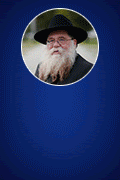The little boy sits patiently on the stool as one by one, his family members and friends cut off a lock of his long brown hair.
Rabbi Yitzchok Goldenberg of Chabad of Lawrenceville encourages his guests at the Jewish Community Center to stick around so they can enjoy some food and cake after the ceremony.
The Chabad Rabbi and his wife, Dina, are in a festive mood. Their boy, Mendy, has just turned 3.
In keeping with Hasidic Jewish custom, Mendy has a party, recites some Hebrew verses and gets his first haircut, a communal celebration, where every guest snips off a lock of hair.
Haircut marks passage
Family celebrates Hasidic Jewish custom
The little boy sits patiently on the stool as one by one, his family members and friends cut off a lock of his long brown hair.
Rabbi Yitzchok Goldenberg of Chabad of Lawrenceville encourages his guests at the Jewish Community Center to stick around so they can enjoy some food and cake after the ceremony.
The Chabad Rabbi and his wife, Dina, are in a festive mood. Their boy, Mendy, has just turned 3.
In keeping with Hasidic Jewish custom, Mendy has a party, recites some Hebrew verses and gets his first haircut, a communal celebration, where every guest snips off a lock of hair.
Grandparents have traveled from Montreal, Canada, and a host of other relatives have made the trip from Brooklyn for this important moment in Mendy’s life.
Just as the Torah requires a newly planted fruit tree to be allowed to grow three years before it is harvested, Mendy’s brown curls have been allowed to grow wild. They almost reach his shoulders. If not for his yarmulke, gray slacks, button-down shirt and vest, he could easily be mistaken for a girl.
But the hair-cutting ceremony, known as upsherinish, marks a transition, a milestone, the beginning of Mendy’s education. He will begin to study the Torah, God’s teachings to the Jewish people, and do good deeds, known as mitzvot. He will wear the tzitzit, a fringed undergarment whose strings and knots are reminders of God’s commandments.
“When a child becomes 3, he begins to question and to understand things,” says his father. “It is time to expose him to as many Jewish items and customs as possible.”
For his first good deed, Mendy puts some coins in a box for charity called a pushka. Then he goes to the microphone and whispers some Hebrew phrases, prompted by his proud father.
The rabbi then plays a game with the children at the party, showing them photos on a large screen and asking them, in exchange for prizes, to identify good deeds such as reading the Torah, wearing the yarmulke, helping mom bake challah and cleaning in preparation for the Sabbath.
When the quiz is over, it is time for the hair-cutting to begin. Mendy sits still as the first guest approaches the stool with a pair the scissors. He looks at his big sister, Rifka, and his mom and smiles. No tears, no squirming, no resistance. Mom and dad’s coaching and preparation has apparently paid off.
The first lock is snipped and placed in a basket and the room erupts with applause.
“Mazel tov,” the guests call out, meaning congratulations and good luck.
















Another version
The upshernisht is not linked to Orlah at all.
It’s a tradition from Adam haRishoin to protect the male child from L-i-l-l-i-t-h and tricking her into thinking he’s a girl so she won’t harm him.
mommy tatty
m azal tov mendy we love you
B.C.M STUDENT
ATT ANOTHER VERSION: THE UPSHERNISH IS LINKED TO ORLA!
YOU CAN SEE THAT IN TANYA PEREK VOV IF I’M NOT MISTAKEN. THAT’S INTERSTING ABOUT TRICKING LILIS, WHY WOULD LILIS HARM A BOY ANY MORE THAN A GIRL? I NEVER HEARD IT BEFORE BUT THINGS DO HAVE A FEW EXPLENATIONS.